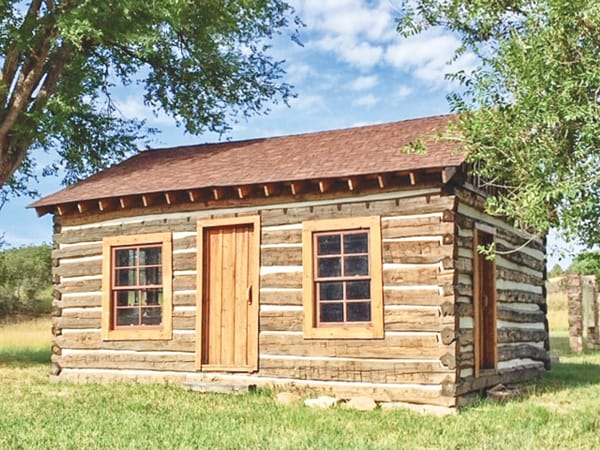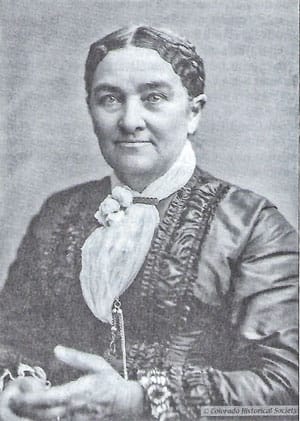Huntsville: Stage stock and stockade

Article and photo by Joe Gschwendtner; photo courtesy of the Colorado Historical Society

This cabin was discovered within the old Sheriff Hammond home and meticulously restored from 2002-2006.
Named for Colorado’s fourth Territorial Governor, Huntsville history was fleeting but colorful, beginning in 1859. Located on the Territorial Road north of Larkspur, Huntsville owed its existence to lumbering, clay extraction, traveler accommodations and security.
In 1858, Iowans Sarah Ann and James Coberly arrived in Colorado by wagon train with their four children. Settling first in Perry Park, they moved further east to access Plum Creek’s waters. There, Sarah laid out the town site that would become Huntsville.
Since Huntsville was on the stage route to Colorado City, there was a need for hospitality services – food, rest and lodging. Identified as a business opportunity by Sarah in 1859, she built and operated the Coberly Halfway House, which would go on to enjoy widespread popularity.
Regarded as the first white female pioneer in the Pikes Peak Region, Sarah was gifted with a high intellect, driving ambition and an independent streak. Sarah lost two husbands, one allegedly killed by American Indians, the other perhaps because he could not keep up with her torrid pace.
As he did on Daniels Park Road, D.C. Oakes placed another steam-driven sawmill in Huntsville, having secured a timber culture grant from the government. A brilliant move, the slopes of Hunt Mountain and rolling hills along East Plum Creek offered him dense stands of ponderosa pine and Douglas fir. At one time, his Huntsville logging venture employed as many as 150 lumbermen.

Sarah Coberly was Huntsville’s “industrial strength” woman whose talents and hospitality made her famous county wide. Photo courtesy of Colorado Historical Society.
Still, the 1860s were the “Wild, Wild West.” As local tribes recognized the looming end of their dominance, skirmishes would erupt. This included sporadic attacks on vulnerable homesteaders. So it happened that Huntsville would be the site of Fort Lincoln (also called “Oakes’ Folly”) a nine-room log stockade to which villagers fled when marauding American Indians threatened.
Naturally, all manner of sightings fed the rumor mill. Some had merit, some did not. Olive Oakes, D.C.’s wife, wrote of the “Indian excitement” and the rumor that they had “declared war against the pioneers.” She further reported that settlers were “frantically working on a fort” and her next letter would tell the real story “unless they were scalped.” Several pioneer families were forced to live in Fort Lincoln for months after the Franktown massacre. Olive’s later accounts reported that when the raids were over, some settlers found nothing but ashes where their homes once stood.
Today the Crull-Hammond Cabin is the lone remainder, marking the center of what was once Huntsville (6225 Bear Dance Drive). Visible on West Frontage Road, it is a pleasant tourist stop. William Crull, the second of Sarah’s failed husbands would later become Huntsville’s second postmaster after D.C. Oakes in 1869. Originally, Crull had homesteaded the 160-acre site, but the cabin bearing his name was built after he moved on. The Oakes Mill was directly south of the cabin.
Huntsville was short-lived, the floodwaters of a 100-year storm in 1864 having delivered it a devastating blow. By 1871, the post office was relocated to Larkspur and Huntsville’s glory days fast faded into history.
Wildcat Lore
As it turns out, The Connection serves residents of the Wildcat Mountains, a name pioneers and historians gave to the high country paralleling I-25 from Highlands Ranch and Lone Tree south to Castle Rock. Since the first territorial road (Daniels Park Road) bisected our mountains, there was no shortage of colorful characters parading through what are now private properties on the ridges of Douglas County. We bring these grizzled and gutsy settlers alive again, vividly sharing their stories of grit and achievement in these Castle Pines.